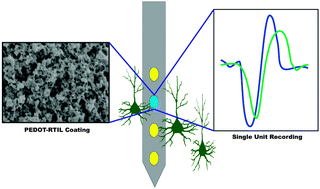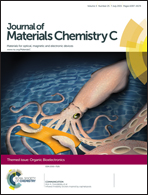Poly(3,4-ethylenedioxythiophene)-ionic liquid coating improves neural recording and stimulation functionality of MEAs
Abstract
In vivo multi-electrode arrays (MEAs) can sense electrical signals from a small set of neurons or modulate neural activity through micro-stimulation. The electrode geometric surface area (GSA) and impedance are important for both unit recording and neural stimulation. A smaller GSA is preferred due to enhanced selectivity of the neural signal, but it tends to increase electrode impedance. Higher impedance leads to increased electrical noise and signal loss in single unit neural recording. It also yields a smaller charge injection window for safe neural stimulation. To address these issues, poly(3, 4-ethylenedioxythiophene)-ionic liquid (PEDOT-IL) conducting polymers were electrochemically polymerized on the surface of the microelectrodes. The PEDOT-IL coating reduced the electrode impedance modulus by over 35 times at 1 kHz. It also exhibited a compelling nanostructure in surface morphology and significant impedance reduction in other physiologically relevant range (100–1000 Hz). PEDOT-IL coated electrodes exhibited a charge storage capacity (CSC) that was about 20 times larger than that of bare electrodes. The neural recording performance of PEDOT-IL coated electrodes was also compared with uncoated electrodes and PEDOT-poly(styrenesulfonate) (PSS) coated electrodes in rat barrel cortex (SI). Spontaneous neural activity and sensory evoked neural response were utilized for characterizing the electrode performance. The PEDOT-IL electrodes exhibited a higher unit yield and signal-to-noise ratio (SNR) in vivo. The local field potential recording was benefited from the low impedance PEDOT-IL coating in noise and artifact reduction as well. Moreover, cell culture on PEDOT-IL coating demonstrated that the material is safe for neural tissue and reduces astrocyte fouling. Taken together, PEDOT-IL coating has the potential to benefit neural recording and stimulation electrodes, especially when integrated with novel small GSA electrode arrays designed for high recording density, minimal insertion damage and alleviated tissue reaction.

- This article is part of the themed collection: Bioelectronics

 Please wait while we load your content...
Please wait while we load your content...